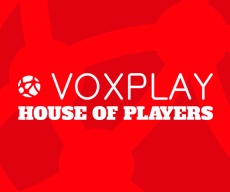Star investigation: Documents contradict CHL stance on junior players amid lawsuit

(By ROBERT CRIBB, Investigative Reporter – thestar.com – Mon., Oct. 31, 2014 – Picture: CHRIS SO / TORONTO STAR)
Junior hockey player employment records, league contracts, U.S. immigration documents and two new class-action lawsuits in Quebec and Alberta imply — or explicitly state — that Canadian Hockey League clubs treat some of their players as employees, despite contrary public statements by league officials, an ongoing Star investigation has found.
Six leading employment and tax lawyers interviewed by the Star say the 60-team CHL faces an uphill battle trying to defend against class-action lawsuits alleging its players are employees deserving of minimum wage and benefits.
“Looking at all of the factors . . . it’s hard for me to imagine that these players are not employees,” says Toronto employment lawyer Stuart Rudner. “The clubs tell these players everything, including when to eat, when to show up, when to have a pre-game nap, all of which are hallmarks of an employee who is not independent.”
The allegations have not been proven in court and league officials have said they will defend themselves against the claim in court.
A week after the Star first reported on a class-action suit filed in Toronto against the CHL claiming $180 million in damages and unpaid minimum wages for thousands of players, a new $60-million suit was filed Friday in Calgary and another $50-million suit in Montreal Thursday targeting two of the CHL’s three regional leagues — the Western Hockey League and the Quebec Major Junior Hockey League.
The leagues “knew or recklessly disregarded the fact that the relationship between the club and (players) was one of employer/employee, and as such the contracts contravened employment standards legislation, yet required the contracts be signed so as to avoid paying the (players) minimum wages, vacation pay, holiday pay or overtime pay,” the claim alleges.
League officials did not respond to requests for comment.
CHL officials have long denied that the relationship between its clubs and players are that of employer and employee, referring to them instead as “independent contractors” or “student
The QMJHL claim, obtained by the Star, cite a document titled “Rights And Obligations of Players” that states: “20-year-old players are considered to be employees and are treated as such.”
The lead plaintiff in both claims, Lukas Walter, was a 20-year-old player with the Saint John Sea Dogs of the QMJHL last year and the Tri-City Americans of the Western Hockey League for two seasons between 2011 and 2013.
He was issued a T4 statement and a record of employment by the Sea Dogs which covered the 2013 season, detailing about $8,300 in income as well as pension and employment insurance deductions for 1,048 hours of work.
The T4, obtained by the Star, lists the club’s name under the heading “Employer’s name” and the player’s name under the heading “Employee’s name.”
After Walter’s career with the Sea Dogs ended in March, the club then issued him a “Record of Employment” listing itself as “employer” and the player as “employee” on the form. His occupation is listed as “hockey player” and his insurable earnings are detailed.
“This establishes beyond any doubt that this team considers its players to be employees and they’re treating them that way,” says Toronto lawyer Ted Charney, who filed both class-action lawsuits.
Canada Revenue Agency officials responded to the Star’s questions saying, “Generally, when an employer pays remuneration to an employee it is reported on a T4 slip.” Officials would not respond directly to questions about junior hockey players “for confidentiality reasons.”
Wayne Long, president and part-owner of the Sea Dogs, said that while his club may have issued T4 slips in the past, it no longer does so.
“The league changed how we do that. We don’t see players as employees. Some teams had it wrong in the past and it’s all been corrected.”
Asked about the T4 and record of employment Walter received, Long said 20-year-old players are different, but would not comment on how they are different or why players on the same team are treated differently based on their ages.
The QMJHL’s 2013 document describes players from 16 to 19 as “pursuing their academic careers while also benefiting from a framework which supports the development of their athletic potential as hockey players.”
That characterization amounts to a “redrafting” of the contract with the purpose of compelling players to sign a document that would “avoid the application of applicable employment standards legislation,” the statement of claim reads.
The document also contains a player contract for 20-year-olds that distinguishes them from their 16- to 19-year-old teammates. It offers the older players a fixed weekly payment capped at $1,000 a week but “no hourly wages, no overtime pay, no holiday pay, and no vacation pay,” the statement reads.
Photi Sotiropoulos, a spokesperson with the QMJHL, said in a written statement: “We are not currently issuing T4s and we are not certain what the past practices of our clubs may have been. The teams are responsible for filing their own tax documents and the league doesn’t have access to their detailed information.”
Walter, who was paid $476 a week under his contract, played left wing last year on a forward line with a 16-year-old and an 18-year-old. Only he was treated as an employee.
“I really don’t know what the difference is,” Walter said in an interview from his home in Langley, B.C. “If they’re going to say employee for one player, it should be for every player.”
Several lawyers say the distinction could open the league to allegations of age discrimination.
“They’re admitting that the players’ function is that of employment,” said Toronto employment lawyer Howard Levitt. “If there’s no distinction on the conditions of work between a 20-year-old and a 19-year -old, that would seem on its face to be a violation of the Human Rights Code. It is bizarre that they’d be so stupid to make such a strong case against themselves by having those provisions.”
Another set of records obtained by the Star — issued by the U.S. Citizenship and Immigration Services in 2012 — lists 42 mostly Canadian hockey players approved to enter the U.S. under a “petition for a non-immigrant worker” application by the Washington-based Tri-City Americans. The government document refers to the players as “foreign workers” and a letter from the club to players in August, 2012, informs them they were approved to enter the U.S. and play with the club under a P-1 status.
That is defined on the U.S. Citizenship and Immigration website as a classification for those entering the country to “perform at a specific athletic competition as an athlete, individually or as part of a group or team, at an internationally recognized level of performance” and refer to the petition being filed by a “U.S. employer.”
The Calgary-filed suit, obtained by the Star, claims: “During the entire time period that Luke played for the Americans, the United States of America required the Americans to employ him and that Luke be employed by the team pursuing the occupation of a hockey player.”
Lawyer Charney said the documents show that clubs “consider themselves to be employers when it comes to communicating with the American government and applying for visas so their players can travel to and play in the U.S . . . U.S. teams characterize their players in different ways depending on how it serves their purpose.”
The $70 to $85 (U.S.) Walter received in weekly pay during his time with the Americans for work weeks that ranged from 40 to 65 hours breaches minimum wage laws, the suit also alleges.
A spokesperson with the Tri-City Americans declined comment. Ron Robison, president of the Western Hockey League in which the Americans play, says his league does not consider players employees.
“We do not pay players. We are reimbursing them for expenses on a monthly basis.”



